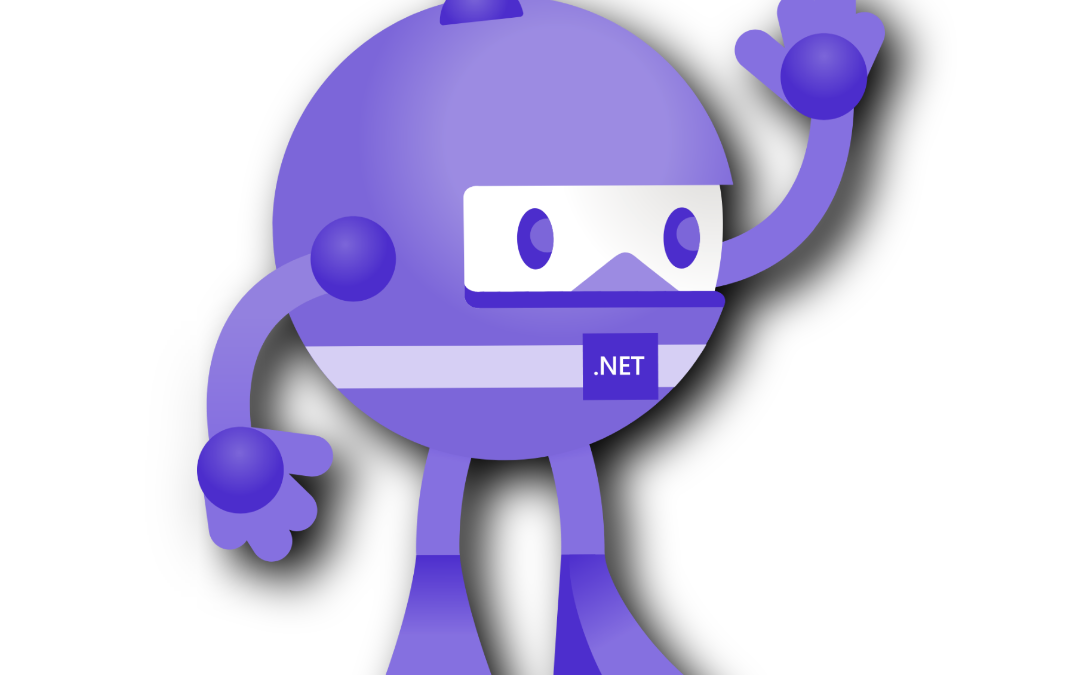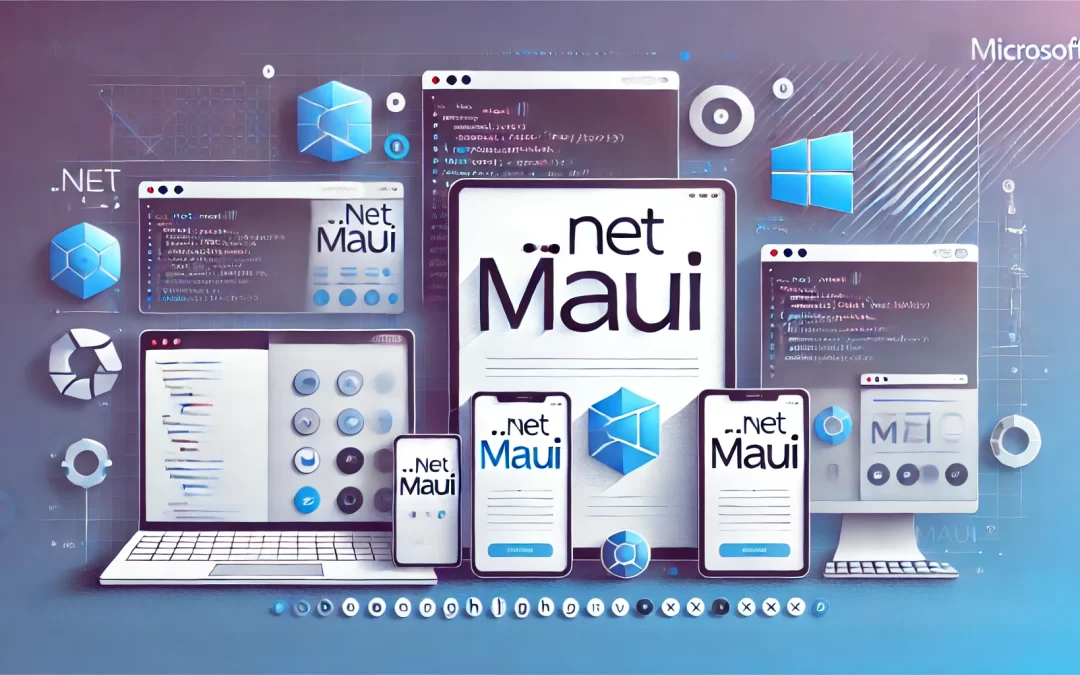
by CodyJG10 | Dec 28, 2024 | .NET MAUI
In the evolving landscape of mobile app development, .NET MAUI (Multi-platform App UI) emerges as a pivotal framework enabling developers to create native applications for iOS and other platforms. This article delves into the steps and best practices for deploying iOS apps using .NET MAUI, providing you with the tools you need to succeed.
Introduction to .NET MAUI
.NET MAUI (Multi-platform App UI) is a powerful framework that allows developers to create cross-platform applications using C# and XAML. Its architecture is built on a shared codebase which minimizes redundancy and eases maintenance. Unlike traditional methods that require separate codebases for iOS and Android, .NET MAUI employs a single project structure supporting multiple platforms, streamlining the development process. This approach benefits developers by leveraging existing .NET libraries and tools, reducing learning curves and fostering productivity. Furthermore, the rich feature set of .NET MAUI, including native APIs, adaptive layouts, and designer tools, equips developers with robust solutions for creating responsive, high-performance apps. This combination of modern architecture and familiar programming paradigms places .NET MAUI as a strong contender in the cross-platform development landscape.
Setting Up Your Development Environment
To develop and deploy iOS applications with .NET MAUI, you must first set up your development environment properly. Start by installing Visual Studio 2022 or later on a Mac, as iOS development requires macOS. Within Visual Studio, ensure you install the .NET MAUI workload, which includes all necessary SDKs and libraries for building .NET MAUI apps.
Next, you need Xcode, Apple’s integrated development environment. Download it from the Mac App Store and accept its license agreement to ensure all components are ready for use. With Xcode installed, you can create a new .NET MAUI project by selecting a .NET MAUI App template from Visual Studio. Once the project is generated, you should configure it for iOS deployment by setting the iOS build configurations and ensuring that the correct entitlements and app icon resources are included, preparing your app for final deployment testing.
Deploying and Testing Your iOS App
Deploying your iOS application developed with .NET MAUI involves several critical steps to ensure a smooth rollout. Start by creating an iOS build within Visual Studio. Navigate to the Configuration Manager, select the iOS project, and ensure it’s set to “Release” mode, targeting an appropriate iOS version.
Next, configure app capabilities in the Info.plist file, where you define identifiers, permissions, and any required entitlements. Provisioning profiles are essential; they link your app to your developer account. You can set these up through Apple’s Developer Center, making sure your app’s bundle identifier matches.
To test the app, connect a physical device or use the iOS Simulator. For physical testing, ensure your device is registered in your developer account, and the necessary certificates are installed. When deploying, watch for common issues like provisioning errors or mismatched bundle IDs. Emphasizing continual testing throughout the development process is best practice—integrate unit tests, UI tests, and leverage continuous integration tools to maintain app stability and performance.
Conclusions
Deploying to iOS using .NET MAUI not only simplifies the development process but also leverages the power of C# and .NET across multiple platforms. By following the outlined steps and utilizing best practices, developers can create robust, high-performance apps that enhance user experience on iOS devices.

by CodyJG10 | Dec 27, 2024 | .NET MAUI, Uncategorized
Introduction
The technology landscape is constantly evolving, and Microsoft continues to expand its ecosystem to meet modern development needs. One of the most exciting additions to the .NET platform is .NET MAUI (Multi-platform App UI). Designed to simplify cross-platform app development, .NET MAUI allows developers to create native applications for Android, iOS, macOS, and Windows—all from a single codebase. Building upon the success of Xamarin.Forms, MAUI offers improved performance, streamlined architecture, and native access to device-specific features. For developers looking to consolidate their tooling and produce modern, performant applications, .NET MAUI is worth a closer look.
A Unified Framework
.NET MAUI embodies the concept of “write once, run anywhere.” By offering a unified framework, developers no longer have to maintain separate projects for each platform. Instead, you get a single project structure that handles platform-specific targets, resources, and UI elements. Under the hood, it still leverages the power of .NET 7 (and onward), giving you access to familiar tools like C#, XAML, and NuGet packages. This simplification helps teams collaborate efficiently and reduces overhead when managing multiple platforms.
Enhanced UI and Controls
A standout feature in .NET MAUI is its library of cross-platform controls that render natively on each operating system. That means your buttons, text fields, and other interface components look and behave like native elements. Rather than dealing with custom renderers—as was common in Xamarin.Forms—.NET MAUI provides a more direct and flexible approach for customizing UI. With modern features like Hot Reload, developers can quickly iterate on designs and see changes almost instantly. This real-time feedback loop speeds up the development process, making it easier to perfect the user experience.
Performance and Productivity
Performance has always been a primary concern for cross-platform apps. .NET MAUI addresses this by improving rendering pipelines, startup times, and memory usage. Much of these enhancements come from the underlying .NET runtime optimizations. Pair these with advanced debugging tools in Visual Studio, and you get a smoother path to building and optimizing your applications. Productivity also sees a boost with features like IntelliSense, integrated testing, and robust debugging across all supported platforms, ensuring you can rapidly diagnose issues and push out updates.
Native Platform Integrations
Modern apps often require deep integration with native functionalities like camera access, geolocation, and push notifications. .NET MAUI provides simplified access to these features through the .NET MAUI Essentials library, which abstracts platform differences behind a single, uniform API. You can write one set of code, and it will tap into the native capabilities of Android, iOS, macOS, or Windows. This approach saves development time and reduces inconsistencies across platforms.
Looking Forward
As the successor to Xamarin.Forms, .NET MAUI signifies Microsoft’s dedication to streamlining app development in the .NET ecosystem. It delivers the flexibility of a single codebase without sacrificing the performance and look of native apps. Whether you’re a seasoned Xamarin developer or new to the .NET world, .NET MAUI provides an exciting and powerful way to build cross-platform solutions.
Conclusion
By unifying the project structure, enhancing UI capabilities, and boosting performance, .NET MAUI empowers developers to craft high-quality, native apps with minimal friction. If you’re aiming to simplify your cross-platform journey, exploring .NET MAUI is a strategic move that can pay off with streamlined development, consistent user experiences, and a thriving ecosystem of tools and libraries.

by CodyJG10 | Sep 9, 2023 | Uncategorized
rtificial intelligence (AI) has become one of the most transformative forces shaping the modern world. From self-driving cars that navigate city streets to personalized streaming services that predict our tastes, AI is no longer a distant vision of the future; it is an integral part of our everyday lives. The journey of AI began decades ago as an ambition to replicate human intelligence in machines. Today, it has matured into a sophisticated field that encompasses everything from natural language processing to advanced robotics. It promises solutions to some of humanity’s biggest challenges—healthcare, climate change, economic inequality—while also sparking debates around ethics, privacy, and the future of work.
Thanks to rapid advancements in computing power and the availability of massive datasets, AI systems are learning faster and performing tasks once considered impossible. Corporations, governments, and researchers see enormous potential in leveraging AI to revolutionize virtually every sector, including education, manufacturing, finance, and transportation. It is common to encounter AI-driven recommendations, chatbots, or voice assistants on a daily basis, reflecting the pervasive influence of this technology. Yet, for all its incredible potential, AI also raises important questions: How should it be regulated? Who benefits from these breakthroughs? And how can we ensure AI is a force for good rather than a tool for exploitation?
1. A Brief History of AI (Approx. 200 words)
To understand AI’s current capabilities and where it might lead us, it helps to look back at its origins. The field can be traced to the 1950s, when computer scientists like Alan Turing theorized about the possibility of machines that could “think.” John McCarthy, credited with coining the term “artificial intelligence,” organized the famous Dartmouth Conference in 1956, which is widely regarded as the birth of AI as a research field. Early developments were often centered on logic-based systems and symbolic reasoning. Researchers struggled to tackle complex problems, largely due to limited computational resources and an underestimation of the complexity of tasks like pattern recognition and language understanding.
Over time, AI research witnessed cycles of boom and bust, colloquially known as the “AI winters.” Funding and interest surged when breakthroughs occurred, such as the development of expert systems in the 1980s, but waned when ambitious goals proved difficult to achieve. However, the early 2000s brought new life to the field, largely fueled by the emergence of more powerful computers and the explosion of digital data. Machine learning and neural networks—algorithms loosely modeled on the human brain—gained traction as they provided more robust methods for recognizing patterns, interpreting images, and understanding language. These advancements set the stage for the AI revolution we’re witnessing today.
2. Types of AI: Narrow, General, and Beyond (Approx. 200 words)
AI can be broadly categorized into narrow AI, artificial general intelligence (AGI), and artificial superintelligence (ASI). Narrow AI (or weak AI) is the form we see most commonly today. It is designed to perform a single task, or a limited range of tasks, extremely well. Examples include voice assistants like Siri or Alexa, recommendation engines on Netflix or YouTube, and fraud detection software in banks. These systems excel in specific domains but can’t transfer their “intelligence” to other areas.
AGI, on the other hand, refers to a machine with the ability to understand, learn, and apply knowledge across a wide array of tasks—much like a human being. AGI remains an aspirational concept that has not yet been realized. It would require the machine to be as adaptable, creative, and self-aware as a human, with the capacity to reason about practically any topic or task.
ASI is a theoretical concept describing a machine’s intelligence surpassing human capability in every domain, from scientific problem-solving to emotional understanding. While it’s a fixture in sci-fi narratives, experts differ on whether ASI could emerge this century, if at all. Nonetheless, discussions around ASI highlight how profoundly such a breakthrough could change society—offering utopian possibilities or apocalyptic fears.
3. The Rise of Machine Learning and Deep Learning (Approx. 200 words)
Modern AI’s resurgence owes much of its success to machine learning and deep learning. Machine learning is a subfield of AI that gives computers the ability to learn from data without being explicitly programmed. Instead of defining a set of rigid instructions, machine learning systems analyze vast datasets, identify hidden patterns, and use these insights to make predictions or decisions. This approach is particularly valuable in areas where writing detailed rules for every scenario is nearly impossible—such as face recognition or speech-to-text processing.
Within machine learning lies deep learning, which uses layered structures called neural networks—loosely inspired by how neurons in the brain transmit information. Deep learning algorithms process data through multiple layers, each extracting increasingly abstract features. For example, when processing an image, the first layer might identify edges, the next layer might recognize shapes, and subsequent layers might detect objects or specific features like faces. This hierarchical approach enables AI systems to achieve astonishing accuracy in many tasks, including image classification, language translation, and even playing complex games like Go or poker.
These breakthroughs in machine learning and deep learning have opened new frontiers, allowing AI to tackle tasks never before considered feasible—and to do so with unprecedented speed and precision.
4. Real-World Applications of AI (Approx. 200 words)
Artificial intelligence has found its way into virtually every industry. In healthcare, AI-powered tools analyze medical images to aid diagnoses, predict disease progression, and personalize treatment plans. Pharmaceutical companies use advanced machine learning to discover new drugs and speed up clinical trials. In finance, AI algorithms detect fraudulent transactions within milliseconds and power personalized banking experiences. By evaluating a customer’s creditworthiness with remarkable detail, banks can offer tailored products and reduce risks.
Retail is also undergoing an AI-driven transformation. E-commerce platforms like Amazon rely on recommendation engines to personalize each user’s shopping experience, while physical stores use AI-driven inventory systems to manage stock levels accurately. On the manufacturing floor, robotics and predictive maintenance optimize production lines, reduce downtime, and minimize human error.
Perhaps the most visible consumer application is the rise of autonomous vehicles. Self-driving cars, guided by advanced sensors and AI algorithms, promise safer roads, less traffic congestion, and improved mobility for those unable to drive. In agriculture, AI-driven drones and sensors help monitor crop health, optimize irrigation, and increase yields while reducing pesticide use. The scope of AI applications is immense and continuously growing, offering new possibilities and efficiencies for businesses and everyday people alike.



